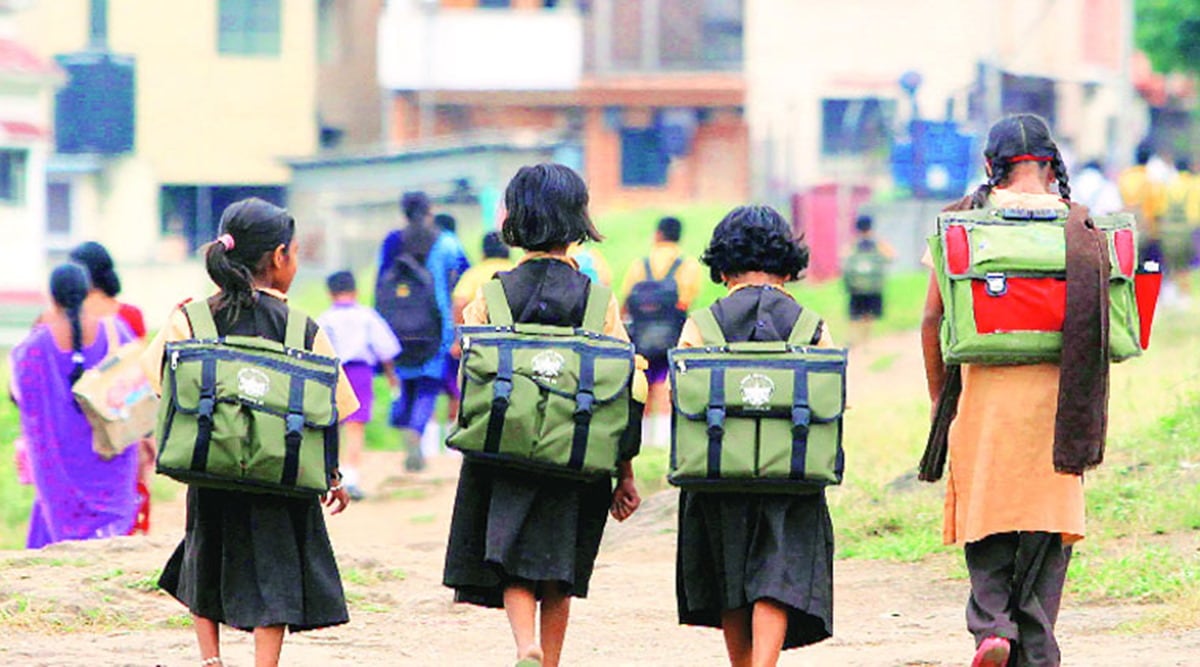 Teachers would play a crucial role in making sure that students take the necessary precautions. (File)
Teachers would play a crucial role in making sure that students take the necessary precautions. (File)Several schools across the country, from Himachal Pradesh to Chandigarh, are to gradually reopen, now that the Health Ministry has permitted it.
But before children start going to school, it is important to ensure their safety by taking some precautionary measures. United Nations Children’s Fund (Unicef) has come up with some suggestions for the school administration and also teachers who would play a crucial role in making students abide by the precautionary rules.
Physical distancing
* Maintain a distance of at least one metre between everyone present at school
* Increase desk spacing (about one-metre distance), stagger recesses or breaks and lunch breaks
* Limit mixing of classes for school and school activities.
* Use signs, ground markings, tape, barriers, and other means to maintain one-metre distance in queues around entrances
* Move lessons outdoors or ventilate rooms as much as possible
Health and hygiene
“Handwashing is one of the easiest, more cost-efficient and effective way of combating the spread of germs and keeping students and staff healthy,” mentions Unicef.
Teachers should teach these five steps to students:
*Wet hands with safe, running water
*Apply enough soap to cover wet hands
*Scrub all surfaces of the hands – including backs of hands, between fingers and under nails – for at least 20 seconds. You can encourage students to sing a quick song at this point to make it a fun habit
*Rinse thoroughly with running water
*Dry hands with a clean cloth or single-use towel.
In case of limited access to a sink for handwashing, one can use a hand sanitiser containing at least 60 per cent alcohol.
Students should be encouraged to wash hands or apply sanitiser while “entering or leaving the classroom, touching surfaces, learning materials, books and after using a tissue to blow their nose”.
Students should also be advised to sneeze or cough into their elbow. “However, if by accident they do so in/on their hands, instruct them to immediately wash their hands or apply hand sanitiser,” reads the article by Unicef.
Read| Home-based care for COVID-19 infection; here are some dos and don’ts
Wearing masks
Unicef advised, “If wearing fabric masks is recommended in your school, then make sure your students are familiar with when they should wear masks, and any related school policies, such as how to dispose of used masks safely to avoid the risk of contaminated masks in classrooms and playgrounds.”
In case of students with hearing loss or auditory problems, schools should consider how children may miss their learning opportunities because of degraded speech signal stemming from mask-wearing, the elimination of lipreading and speaker expressions, and physical distancing. Appropriate masks like those with clear panels should be used in such cases.
Cleaning and disinfecting
Unicef recommended “daily cleaning and disinfecting of surfaces and objects that are touched often, such as desks, countertops, doorknobs, computer keyboards, hands-on learning items, taps, phones and toys.”
If surfaces and objects are found to be soiled, they should be cleaned immediately.
What to do if a student feels sick
Unicef suggested the following measures:
* Designate a specific area in the school as a waiting room for children. The room should be well-ventilated. If a student feels ill and/or exhibits symptoms of COVID-19, they should wait in the designated room to be picked up by their parents/caregiver. Afterwards, the room should be cleaned, disinfected and sanitised
* The sick student should be provided with a medical mask
* Consider daily screening for body temperature, and history of fever or feeling feverish in the previous 24 hours, on entry into the building for all staff, students and visitors to identify persons who are sick
* Ensure a procedure for separating sick students and staff from those who are well – without creating stigma – and a process for informing parents, and consulting with health care providers/ health authorities wherever possible
* Students/staff may need to be referred directly to a health facility, depending on the situation/context, or sent home
Encourage all students to stay home and self-isolate should they feel ill
* Develop a standard of operation if temperature screening is required
* Share procedures with parents and students ahead of time
For more lifestyle news, follow us: Twitter: lifestyle_ie | Facebook: IE Lifestyle | Instagram: ie_lifestyle
📣 The Indian Express is now on Telegram. Click here to join our channel (@indianexpress) and stay updated with the latest headlines
For all the latest Lifestyle News, download Indian Express App.